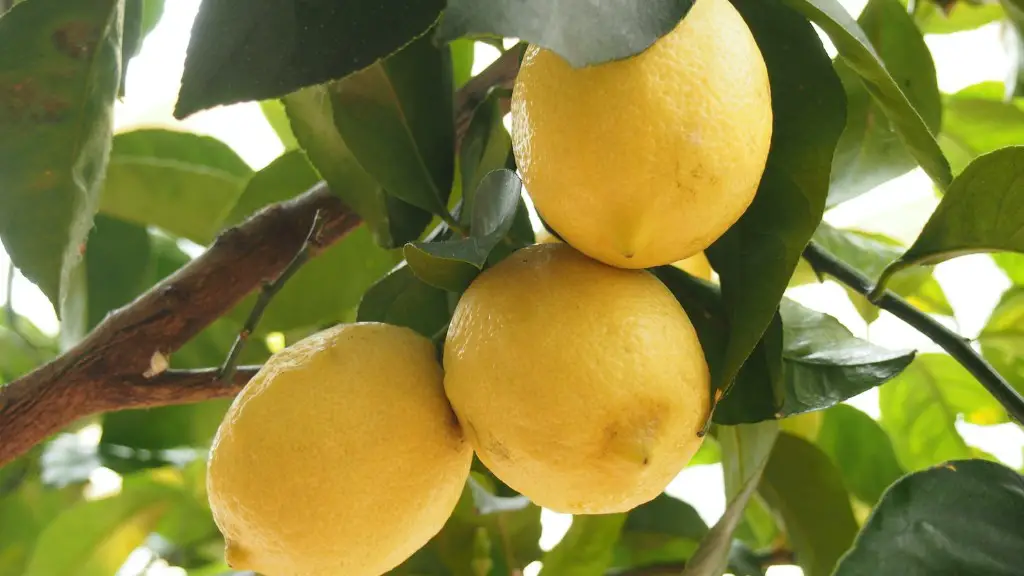One of the best ways to ensure high yield of citrus fruits is through hand pollination of indoor lemon trees. Hand pollination is a process of transferring pollen from the male part of a flower to the female part by using a hand-held brush or other device. Although this method is labor-intensive and time consuming, it’s the only viable way for indoor cultivators to achieve optimal fruit production. Here’s a step-by-step guide on how to hand pollinate an indoor lemon tree.
Step 1: Prepare the flowers. Check the flower for its readiness. You would know when the flower is ready for pollination when it’s open and its long stigma is seen. Once you’ve identified the ready flowers, then gently twist the petals of each to remove the pollen from the anther.
Step 2: Anoint the stigma. Gently roll the pollen onto the stigmas, which are the sticky surface above the petals. Cover the stigma with enough pollen, then use a hand-held brush or cotton swab to ensure that the entire surface of the stigma is dusted with pollen.
Step 3: Collect the pollen. Every time you transfer pollen from one flower to another, collect some in a small container. This can be used at a future date to transfer pollen between plants.
Step 4: Spread the pollen. Spread the pollen to the other flowers available in the same tree, one at a time, repeating the same process until all available flowers in a given tree have been pollinated.
Step 5: Check the fruits. After a few weeks, check the flowers for fruits. Pay close attention to the fruits, and make sure there are no pests and that the fruits are free from disease.
This process may seem tedious and time-consuming, but hand pollination of indoor lemon trees is the only way to ensure successful breeding and optimum fruit production. With diligence and patience, one can reap rewards when they successfully hand pollinate their indoor lemon tree.
Reaping the Benefits
If your hand pollination efforts prove successful, there are many benefits that can be reaped. The high yields of citrus fruits and other benefits include enhanced flavour, lasting aroma, uniform size and colour, and greater aesthetic appeal.
Pollinating your lemon tree is a time consuming process, but you will be rewarded with quality fruits. Not to mention, your trees will be healthier in the long run because of the absence of pest and disease.
One of the best advantages of hand pollinating your lemon tree, is that you don’t have to rely on animals to do the job. This ensures you’re taking full control of the quality of fruit production, resulting in fruits with superior flavour, scent, and colour.
Process Tips
One tip to simplify the hand pollination process is to use a plastic bag. Put the flowers in the bag first, then gently twist the petals. Subsequently, you can tilt the bag and pollen would easily fall onto the stigma. This would make the entire process more efficient, as you don’t have to manually transfer the pollen from the petal to the stigma for each flower.
Another tip is to work early in the morning or in the late afternoon to avoid bees or other pollinators from getting to the flowers. This will allow you to hand pollinate uninterrupted, and gives you an edge in producing superior quality fruits.
Since it is a time consuming process, it is important to take some precautionary measures. First, make sure you have enough energy to do the task. Drink a cup of coffee or have your favorite snack to get ready for the process. Also, create a plan in order to save time and make work more efficient. It is also recommended to keep a notebook with you to record your observations and make notes to help you in your future projects.
Obtaining Pollen
If you’re a beginner and don’t have access to a variety of flower species, there are other ways to obtain pollen. You can buy it online through a reputable genetic laboratory, which offers specialized pollen that are tailored for specific citrus species.
Alternatively, you can also contract with a reputable grower to sell you the required amount of pollen for pollinating your lemon tree. In this case, make sure that you work with a grower who specializes in the plant species you are interested in and check the reviews so that you’re confident in the quality of the pollen you receive.
Equipment Required
Since this is a type of farming, having the right equipment is essential to successful hand pollination. You will need a good pair of gloves and long-sleeved clothing to protect yourself from the pollen. A dust mask is recommended to protect against the dust, as well as a hand-held brush or cotton swab to ensure the entire surface of the stigma is dusted with pollen.
It is also important to have some kind of instrument to measure the amount of pollen collected. A light microscope offers a better view than the naked eye and could be used to measure quantity. As for fertilizer, the most preferred types are citrus fertilizers to promote fruit growth.
Conclusion of the Process
At the end of the hand pollination process, it’s important to check the flowers and fruits regularly to ensure they are free from pests or disease. It is also important to continue providing appropriate care and maintenance such as water and fertilizer throughout the season to ensure optimal fruit production.




